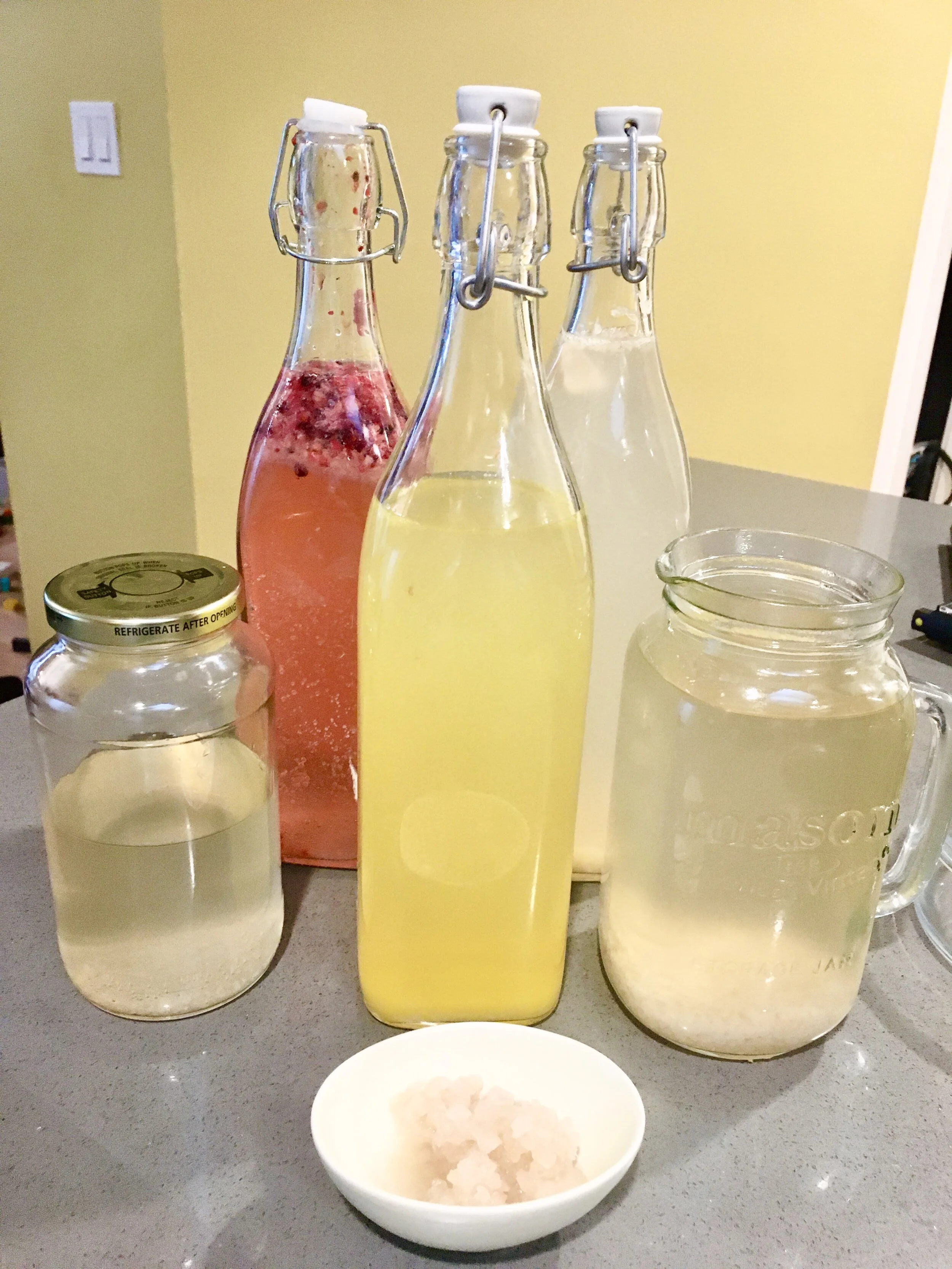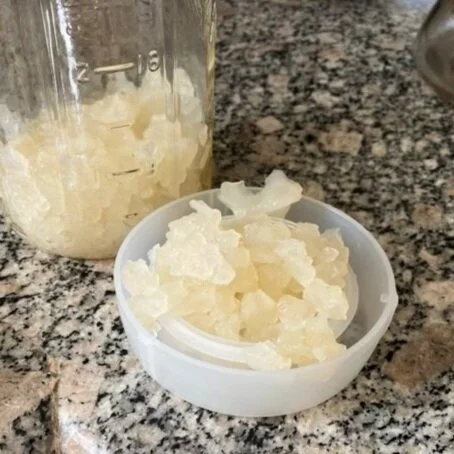Intro to Water Kefir
My newest obsession this year is easily water kefir. Proper pronunciation “Keh-FEAR.” What is water kefir you ask? It’s a probiotic drink that’s both easy to make and easy to drink.
I recently learned about water kefir from a cousin who is living in Cambodia and started her own water kefir company. I have been brewing like crazy since. I love the stuff and have been experimenting with flavors, sugars, fermentation time and giving it to family and friends to try.
Water kefir is similar to kombucha but definitely NOT kombucha. Although I am all for digestive health and run in the same circle as most kombucha lovers (go ahead, call me a hippy) I have never taken a liking to kombucha. I don’t really like bubbly drinks in general actually. And that tangy vinegar taste? No thanks.
But water kefir is much lighter and smoother while still offering the same great health benefits. Plus, when you make it at home you can control the carbonation and flavor. And once you start making it, the grains will increase on their own and you can have a steady supply of water kefir for the rest of your life. Read how to make kefir at home here.
So what’s in it?
Water kefir contains sugar water and a symbiotic culture of bacteria and yeasts or shortened to SCOBY. That’s it! You may have heard of SCOBY when referring to making kombucha, but the bacterias vary between the two. The SCOBY in water kefir are called “grains,” purely because of their shape and not because there is any wheat involved. Let’s be clear: we refer to water kefir “grains” and a kombucha “SCOBY.” Now you can easily slide into a conversation with proper probiotic jargon ;)
(There is also milk kefir too. They are referred to as “grains” too but again, the bacteria is different between water kefir and milk kefir grains. )
The grains eat the sugar and release gas that creates the carbonation. The grains can grow in size and also multiply when healthy. My sister-in-law’s kefir grains doubled in size only after a few batches! (Yes, I have gotten my whole family on this water kefir wagon.) You can amp up production on the water kefir, store it in the fridge for later use or start giving the grains away to share the joy. They are also great for the garden, compost, or blended in smoothies. The gift that keeps on giving.
Why is it good for you?
The bacteria and yeasts are probiotics, living microorganisms that benefit the body. Water kefir contains tons of probiotics and has shown to boost immunity, improve a slew of digestion issues and even slow cancer growth (Healthline). I will only speak from experience that my bowel movements have improved dramatically since drinking water kefir regularly. TMI? I don’t care. Poop is such an important topic to discuss and can tell you so much about your health. But we can save that discussion for another time.
Water kefir or Kombucha?
Both are great options and it will really boil down to personal preference.
Both are filled with good bacteria, acids and enzymes that aid in health.
Kombucha is made with green or black tea, so there could be some residual caffeine effects if you’re sensitive.
I like the flavor of water kefir because I find it is less intense and easier to drink. Although if you let the water kefir sit unrefrigerated for a few days, it can also start to develop that vinegar taste too.
The biggest difference is in brew time. A batch of water kefir is ready in 24-48 hours, where a kombucha batch can take 2-4 weeks. I’m realizing now that the quick brew time is both positive and negative as we can’t always drink it fast enough!
How do you make it?
It’s very easy. Dissolve 1/4C of sugar in 4 C of water. Add to grains. Cover with breathable material like a towel or coffee filter. Let sit for 24-48 hours and voila! Ready. Strain your water kefir into a glass container and you can add flavors like fruits, ginger, herbs etc. The combinations are endless. The kefir will keep fermenting since the probiotics are still active. If you bottle it with an airtight top, you can amp up the bubbles and make a pretty great soda substitute.
For more detailed instructions and how to add flavors, read my “How to make water kefir” article.
And if you’re interested in the different sugars and why it’s important to use glass products, read “Choosing equipment for water kefir”.




